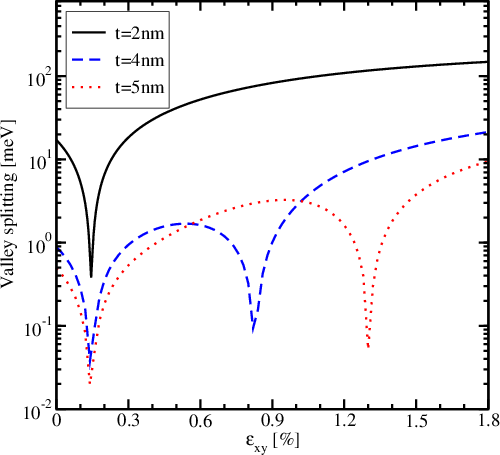
The presence of the [001] confinement combined with the off-diagonal valley
coupling results in the degeneracy lifting of the unprimed subband ladder, leading
to the valley splitting [72]. If the potential profile
 | (3.17) |
where
 | (3.18) |
 | (3.19) |
and for the other parameters c.f. Table 3.2.
It is noted that the spin-orbit coupling
Figure 3.8 shows the variation of the valley splitting with the shear
strain  sin
sin 


 term.
term.